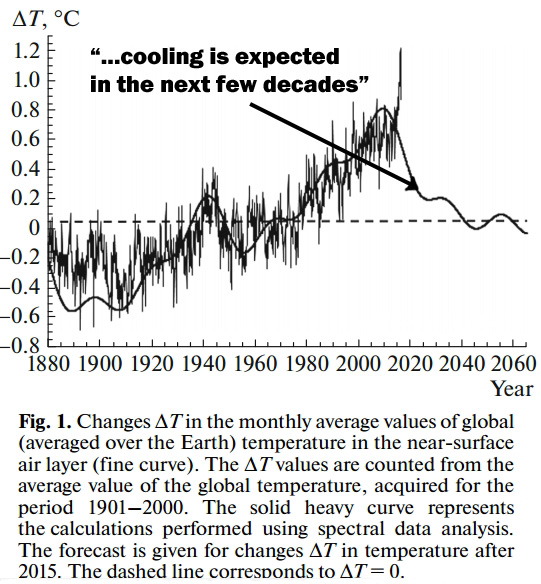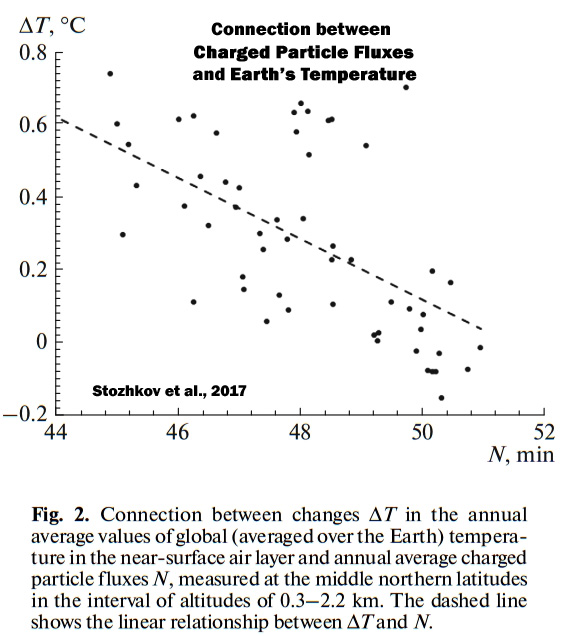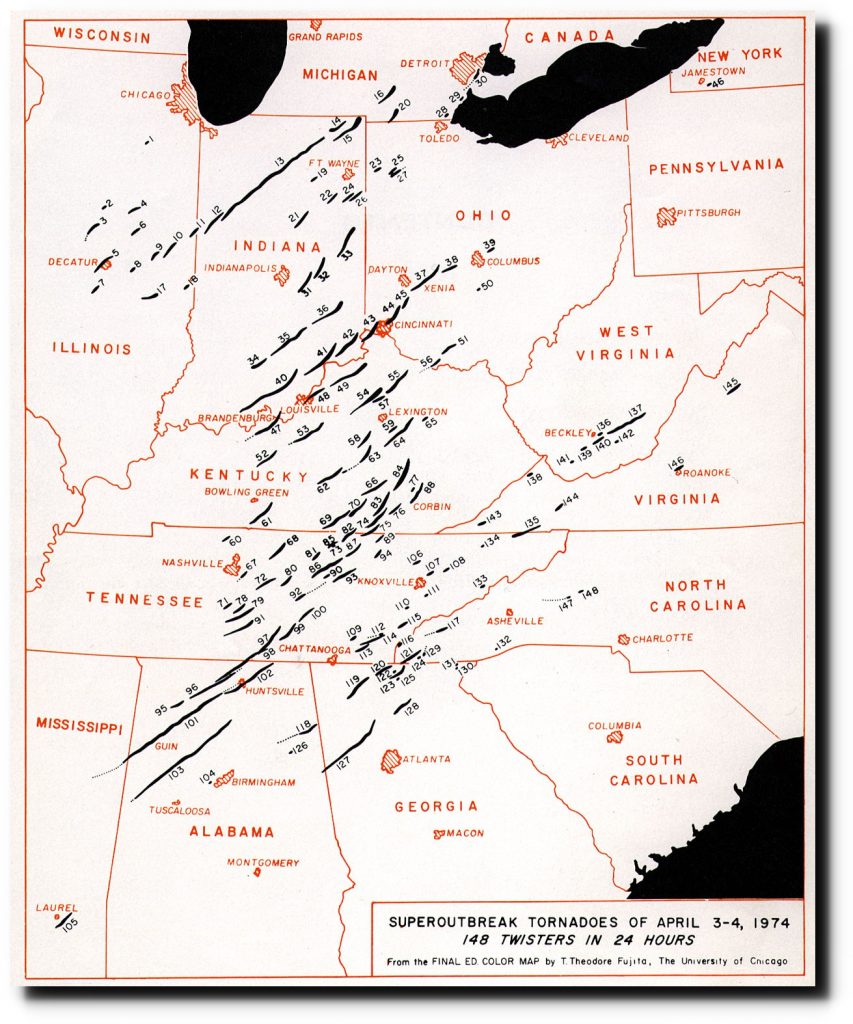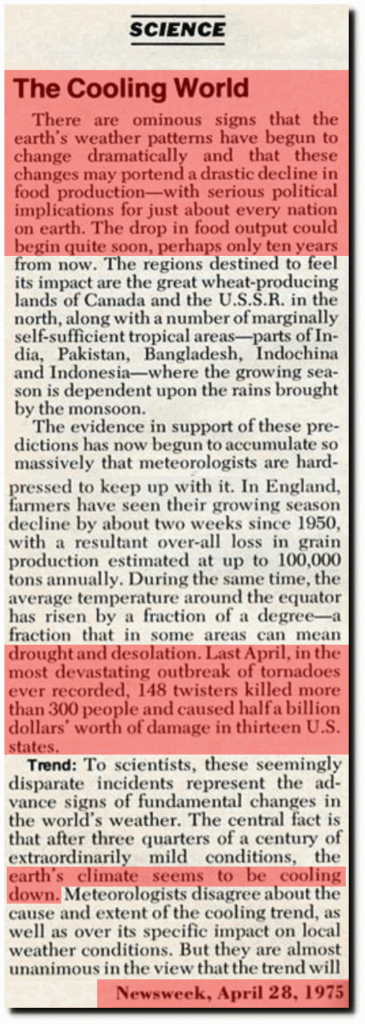COSMIC RAYS ON THE RISE AS SOLAR MINIMUM APPROACHES
By Meteorologist Paul Dorian – Vencore, Inc.
vencoreweather.com

The sun is spotless again today which makes 6 days in a row and marks the 36th day this year – already more than all of 2016
Overview
Today marks the 6th day in a row that the sun is blank and the 36th time this year – already more spotless days than all of 2016. In what has turned out to be a historically weak solar cycle (#24), the sun continues to transition away from its solar maximum phase and towards the next solar minimum. In April 2010, the sun was emerging from the last solar minimum which was historically long and deep. The blank look to the sun will increase in frequency over the next couple of years leading up to the next solar minimum – probably to be reached in late 2019 or 2020. By one measure, the current solar cycle is the third weakest since record keeping began in 1755 and it continues a weakening trend since solar cycle 21 peaked in 1980. One of the impacts of low solar activity is the increase of cosmic rays that can penetrate into the Earth’s upper atmosphere and this can have many important consequences.

Comparison of all solar cycles since 1755 in terms of accumulated sunspot number anomalies from the mean value at this stage of the solar cycle. Plot courtesy publication cited below, authors Frank Bosse and Fritz Vahrenholt
Third weakest solar cycle since 1755
A recent publication has analyzed the current solar cycle and has found that when sunspot anomalies are compared to the mean for the number of months after cycle start, there have been only two weaker cycles since observations began in 1755. Solar cycle 24 began in 2008 after a historically long and deep solar minimum which puts us more than eight years into the current cycle. The plot (above) shows accumulated sunspot anomalies from the mean value after cycle start (97 months ago) and only solar cycles 5 and 6 had lower levels going all the way back to 1755. The mean value is noted at zero and solar cycle 24 is running 3817 spots less than the mean. The seven cycles preceded by solar cycle 24 had more sunspots than the mean.

Daily observations of the number of sunspots since 1 January 1900 according to Solar Influences Data Analysis Center (SIDC). The thin
Paper: ‘Earth On Course For 100-Year Mini-Ice Age’
http://www.dailystar.co.uk/news/latest-news/611671/ice-age-britain-freeze-climate-change-weather
Experts told Daily Star Online planet Earth is on course for a “Little Age Ice” within the next three years thanks to a cocktail of climate change and low solar activity.
Research shows a natural cooling cycle that occurs every 230 years began in 2014 and will send temperatures plummeting even further by 2019.
Scientists are also expecting a “huge reduction” in solar activity for 33 years between 2020 and 2053 that will cause thermometers to crash.
Both cycles suggest Earth is entering a global cooling cycle that could have devastating consequences for global economy, human life and society as we know it.
If predictions of the world-wide big freeze come true, the plot to 2004 film The Day After Tomorrow would not be far from reality during winter.
Flashback: Major Tornado Outbreak Of April 1974 Blamed on — Global Cooling!
The worst tornado outbreak in recent history occurred on April 3-4, 1974 at the peak of the 1970’s ice age scare.
Temperatures on April 3, were very hot in the southeast with Texas over 100 degrees and much of the south over 90 degrees. Over the next 48 hours a strong cold front pushed across the region and spawned the tornadoes when very cold, dry air collided with the warm humid air in the southeast.
…
Scientists at the time blamed the tornadoes on global cooling, which they said was going to kill us all.
www.denisdutton.com/newsweek_coolingworld.pdf
Tornadoes are now blamed on global warming, which scientists say will kill us all. Biggest scam in science history.
Study: ‘Weaker Sun Could Reduce Global Temperatures By Half A Degree’
|
||||
 For the first time, model calculations show a plausible way that fluctuations in solar activity could have a tangible impact on the climate. Studies funded by the Swiss National Science Foundation expect human-induced global warming to tail off slightly over the next few decades. A weaker sun could reduce temperatures by half a degree. —Swiss National Science Foundation, 27 March 2017 1) Swiss National Science Foundation: ‘Weaker Sun Could Reduce Global Temperatures By Half A Degree’ 2) Red Teams Can Save Climate Science From Itself 3) Experts Call For The Creation Of ‘Red Teams’ To Challenge UN Climate Science Panel 4) U.S. House Of Representatives Approves Honest And Open Science Act 5) US Coal Production On The Rise As Gas Prices Go Up 6) China’s Coal Power Generation Rising For Second Year: Citi 7) Surprise: Thousands Of Polluters In Northern China Fake Emissions Data, Resist Checks 8) South Africa Gives Green Light For Shale Gas Fracking In The Karoo 9) Editorial: Lessons From Trump On Coal Prominent scientists operating outside the scientific consensus on climate change urged Congress on Wednesday to fund “red teams” to investigate “natural” causes of global warming and challenge the findings of the United Nations’ climate science panel. The suggestion for a counter-investigative science force – or red team approach – was presented in prepared testimony by scientists known for questioning the influence of human activity on global warming. It comes at a time when President Donald Trump and other members of the administration have expressed doubt about the accepted science of climate change, and are considering drastic cuts to federal funding for scientific research. –Chelsea Harvey, The Washington Post, 31 March 2017 The U.S House of Representatives today approved H.R. 1430, the Honest and Open New EPA Science Treatment Act of 2017 (HONEST Act), introduced by Science, Space, and Technology Committee Chairman Lamar Smith (R-Texas) and Rep. Henry Cuellar (D-Texas). |
Russian Scientists Dismiss ‘Global Warming’, Predict Decades Of Cooling
Scientific Papers Predict Cooling In Coming Decades
A new scientific paper authored by seven scientists affiliated with the Russian Academy of Sciences was just published in the scientific journal Bulletin of the Russian Academy of Sciences: Physics.
The scientists dismiss both “greenhouse gases” and variations in the Sun’s irradiance as significant climate drivers, and instead embrace cloud cover variations — modulated by cosmic ray flux — as a dominant contributor to climate change.
A concise summary: As cosmic ray flux increases, more clouds are formed on a global scale. More global-scale cloud cover means more solar radiation is correspondingly blocked from reaching the Earth’s surface (oceans). With an increase in global cloud cover projected for the coming decades (using trend analysis), a global cooling is predicted.
Stozhkov et al., 2017
Cosmic Rays, Solar Activity, and Changes in the Earth’s Climate
Stozhkov, Y.I., Bazilevskaya, G.A., Makhmutov, V.S.,
“One of the most important problems facing humanity is finding the physical mechanism responsible for global climate change, particularly global warming on the Earth. … Summation of these periodicities for the future (after 2015) allows us to forecast the next few decades. The solid heavy line in Fig. 1 shows that cooling (a drop in ΔT values) is expected in the next few decades.”

“Figure 2 shows the dependence between the annual average changes ΔT in the global temperature in the near-surface air layer and charged particle flux N in the interval of altitudes from 0.3 to 2.2 km. We can see there is a connection between values ΔТ [temperature] and N [charged particle flux]: with an increase in cosmic ray flux N, the values of changes of global temperature decrease. This link is expressed by the relation ΔT = –0.0838N + 4.307 (see the dashed line in Fig. 2), where the ΔT values are given in °C, and the N values (in particle/min units) are related to the charged particle flux measured at an altitude of 1.3 km. The correlation coefficient of the line with the experimental data is r = –0.62 ± 0.08.”

“Our results could be connected with the mechanism of charged particle fluxes influencing the Earth’s climate; it includes, first of all, the effect charged particles have on the accelerated formation of centers
Blank Sun Transitions Towards Solar Minimum
The sun is currently blank with no visible sunspots and this is the 14th straight day with a blank look which is the longest such stretch since April 2010 according to spaceweather.com . A blank look to the sun on Monday, March 20, and it has now been blank for two weeks straight; image courtesy NASA/GSFC Historically weak solar cycle 24 continues to transition away from its solar maximum phase and towards the next solar minimum.
Third weakest solar cycle since 1755
The Sun has been spotless for two weeks straight, says meteorologist Anthony Watts. This makes it the longest stretch with zero sunspots since April 2010 Solar cycle 24, the solar cycle we are now in, has been historically weak, says Watts. “There have already been 26 spotless days in 2017 (34% of the entire year) and this follows 32 spotless days last year which occurred primarily during the latter part of the year. “The blank look to the sun will increase in frequency over the next couple of years leading up to the next solar minimum – probably to be reached in late 2019 or 2020.” Third weakest solar cycle since 1755 “By one measure, the current solar cycle is the third weakest since record keeping began in 1755 and it continues a weakening trend since solar cycle 21 peaked in 1980. “One of the impacts of low solar activity is the increase of cosmic rays that can penetrate into the Earth’s upper atmosphere and this has some important consequences.” https://wattsupwiththat.com/2017/03/20/solar-slump-the-sun-has-been-blank-for-two-weeks-straight/ The post Third weakest solar cycle since 1755 appeared first on Ice Age Now .
Source: Third weakest solar cycle since 1755…
Cloud-Forming Cosmic Rays Above Average More Than One Year As Sun Begins Slumber
Translated/edited from wobleibtdieerderwaermung.de . A huge hole in the magnetically hot corona of the sun in the coming weeks will lead to a powerful solar wind and initiate hefty polar lights in the earth’s magnetic field. This will be a brief pause in the solar activity slumber that has taken hold over the past year and thus allowed cosmic rays to penetrate almost freely into the earth’s atmosphere.
Source: Cloud-Forming Cosmic Rays Above Average More Than One Year As Sun Begins Slumber…
50 Inverted Hockey Sticks – Scientists Find Earth Cools As CO2 Rises
Modern ‘Warmth’ Just A Brief Excursion From 8,000-Year (Continuing) Cooling Trend The scientific literature is replete with evidence that the geological record for the Holocene (the last 10,000 years) fails to support the concept that rising atmospheric CO2 concentrations cause ocean and land temperatures to rise.
Source: 50 Inverted Hockey Sticks – Scientists Find Earth Cools As CO2 Rises…
Oops: One Of Greatest Mass Extinctions Was Due To An Ice Age And Not Global Warming
The Earth has known several mass extinctions over the course of its history. One of the most important happened at the Permian-Triassic boundary 250 million years ago. Over 95% of marine species disappeared and, up until now, scientists have linked this extinction to a significant rise in Earth temperatures.
Source: Oops: One Of Greatest Mass Extinctions Was Due To An Ice Age And Not Global Warming…



